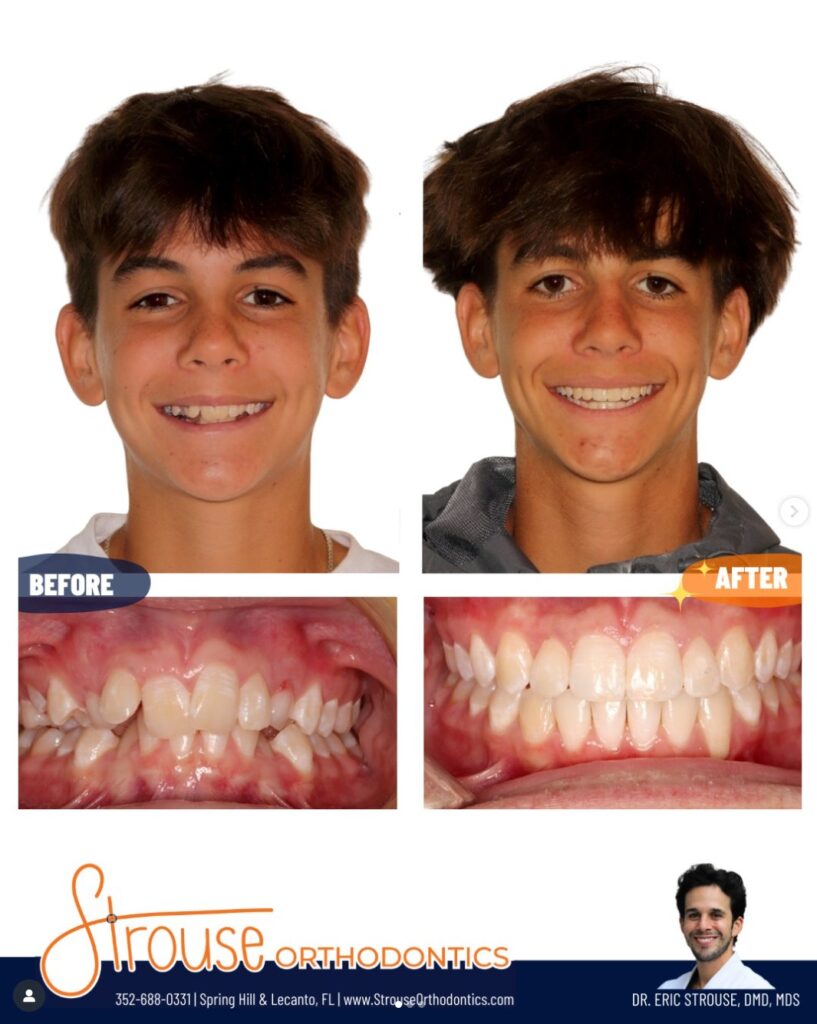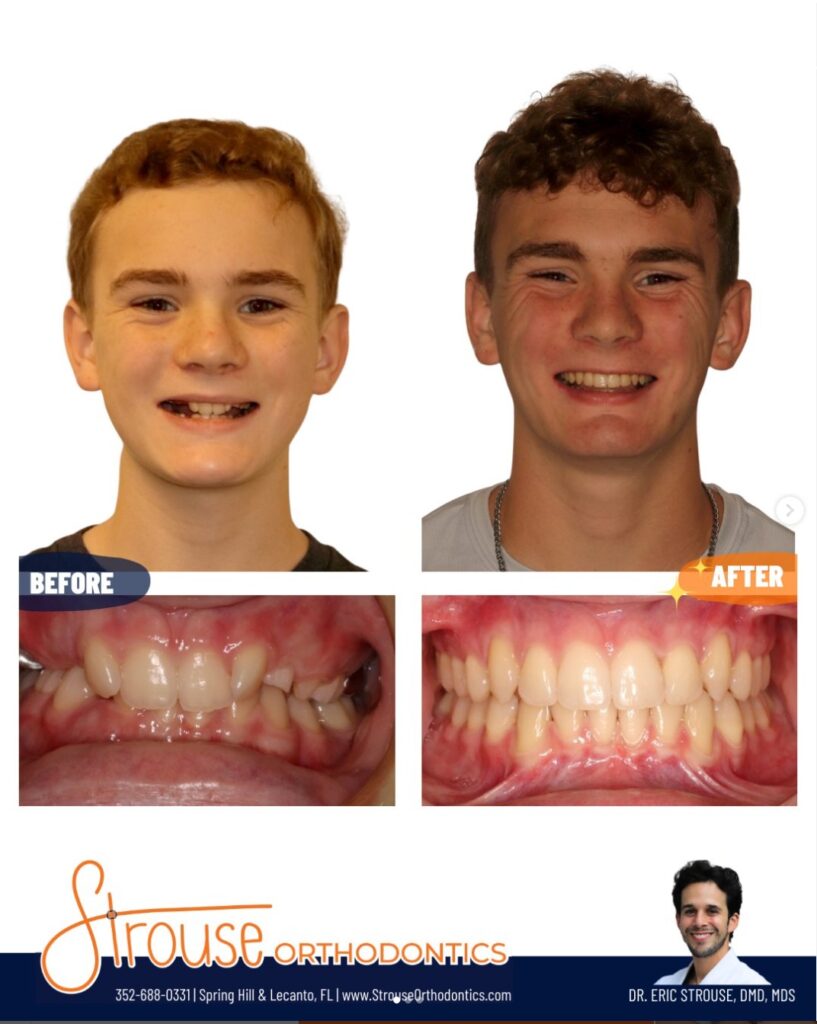How Long Does Orthodontic Treatment Really Take?
October 2nd, 2025
One of the first questions patients and parents ask is: How long will braces or Invisalign take?
The truth is that treatment length can vary depending on the complexity of the case, the goals of treatment, and how well patients follow their instructions. At Strouse Orthodontics, our average treatment time is around 20 months, though orthodontic treatment typically ranges anywhere from 1 to 2 years.
What Affects Orthodontic Treatment Time?
There isn’t one exact answer for everyone. Several important factors influence how long treatment lasts:
- Complexity of the Case
Mild crowding or spacing can sometimes be corrected in less than a year.
Moderate cases with bite correction often take 18–24 months.
Severe cases or those involving impacted teeth, jaw discrepancies, or surgical needs may take longer.
- Treatment Goals
Some patients have very mild issues, while others need a fully corrected bite for long-term health and stability. A comprehensive treatment plan may take a little longer, but it provides the best lifelong results. Some patients that forgot to wear their retainer may only need 6 months of treatment to touch up their smile.
- Patient Compliance
Compliance is one of the biggest factors in treatment success. This includes:
Wearing elastics as directed
Wearing clear aligners 20–22 hours per day if aligners are chosen
Keeping regular appointments
Following dietary and hygiene instructions with braces
Even small lapses in compliance can add months to treatment time. On the other hand, patients who follow instructions closely often finish faster than expected.
Braces vs. Invisalign: Is There a Difference in Treatment Time?
Many people assume Invisalign or clear aligners will be faster, but the timeline depends more on the case than the appliance. With an orthodontic specialist like Dr. Eric Strouse, who has extensive experience and lectures on clear aligner therapy, even complex cases can often be completed efficiently using aligners.
Both braces and aligners are effective tools, the difference is in the plan and how well the patient follows it.
Why Seeing a Specialist Matters
General dentists may provide estimates that sound too good to be true, often because they focus on simpler, cosmetic corrections. Orthodontic specialists, however, evaluate the entire bite, jaw position, and facial structure. This ensures treatment not only looks good at the end but also works well long-term.
By starting with a specialist, you’ll get a realistic estimate of your treatment length and a plan designed for lasting results.
The Bottom Line
At Strouse Orthodontics, most of our patients finish treatment in 18 months on average, though the typical range is 1–2 years. Case complexity, treatment goals, and patient compliance all play a role in the timeline.
If you’re considering braces or Invisalign, the best way to know how long treatment will take for you is to schedule a consultation with an orthodontic specialist.
Call Strouse Orthodontics at 352-688-0331 or schedule online at www.strouseorthodontics.com
to find out how long your treatment might take. We proudly serve patients in Spring Hill, Lecanto, and surrounding Florida communities.




